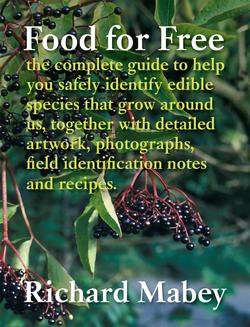Читать книгу Food for Free - Richard Mabey - Страница 6
ОглавлениеSome picking rules
I have given more detailed notes on gathering techniques in the introductions to the individual sections (particularly fungi, seaweeds and shellfish). But there are some general rules which apply to all wild food. Following these rules will help to guarantee the quality of what you are picking, and the health of the plant, fungus or shellfish population that is providing it.
Although we have tried to make both text and illustrations as helpful as possible in identifying the different plant products described in this book, they should not be regarded as a substitute for a comprehensive field guide. They will help you decide what to gather, but until you are experienced it is wise to double-check everything (particularly fungi) in a book devoted solely to identification. Conversely, never rely on illustrations alone as a guide to edibility. Some of the plants illustrated here need the special preparation described in the text before they are palatable.
But although it is obviously crucial to know what you are picking, don’t become obsessed about the possible dangers of poisoning. This is a natural worry when you are trying wild foods for the first time, but happily a groundless one. As you will see from the text there are relatively few common poisonous plants and fungi in Britain compared with the total number of plant species.
To put the dangers of wild foods into perspective it is worth considering the trials attendant on eating the cultivated foods we stuff into our mouths without question. Forgetting for a moment the perennial problems of additives and insecticide residues, and the new worries about irradiated and genetically modified food, how many people know that, in excess, cabbage can cause goitre and onions induce anaemia? That as little as one whole nutmeg can bring on days of hallucinations? Almost any food substance can occasionally bring on an allergic reaction in a susceptible subject, and oysters and strawberries, as well as nuts of all types, have particularly infamous reputations in this respect. But all these effects are rare. The point is that they are part of the hazards of eating itself, rather than of a particular category of food.
Here are some basic rules to ensure your safety when gathering and using wild foods:
• Make sure you correctly identify the plant, fungus or seaweed you are gathering.
• Do not gather any sort of produce from areas that may have been sprayed with insecticide or weedkiller.
• Avoid, too, the verges of heavily used roads, where the plant may have been contaminated by car exhausts. There are plenty of environments that are likely to be comparatively free of all types of contamination: commons, woods, the hedges along footpaths, etc. Even in a small garden you are likely to be able to find something like twenty of the species described in this book.
© David Hosking/FLPA
• Wherever possible use a flat open basket to gather your produce, to avoid squashing. If you are caught without a basket, and do not mind being folksy, pin together some dock or burdock leaves with thorns.
• When you have got the crop home, wash it well and sort out any old or decayed parts.
• To be doubly sure, it is as well to try fairly small portions of new foods the first time you eat them, just to ensure that you are not sensitive to them.
Having considered your own survival, consider the plant’s:
• Never strip a plant of leaves, berries, or whatever part you are picking. Take small quantities from each specimen, so that its appearance and health are not affected. It helps to use a knife or scissors (except with fungi).
• Never take the flowers or seeds of annual plants; they rely on them for survival.
• Do not take more than you need for your own needs.
• Be careful not to damage other vegetation or surrounding habitat when gathering wild food.
• Adhere at all times to the Code of Conduct for the conservation and enjoyment of wild plants, published by the Botanical Society of the British Isles (www.bsbi.org.uk/Code.htm).
What the law says
The law concerning foraging is comparatively straightforward, at least on the surface.
• You are allowed to gather and take away the four Fs – foliage, flowers, fruit, fungi – of clearly WILD plants, e.g. blackberries and elderflowers, even on private land, though other laws regarding trespass and criminal damage may restrict you. You are not entitled to harvest anything from CULTIVATED crop-plants, e.g orchard trees or field-peas.
• But under the Wildlife and Countryside Act and the Theft Act you may not SELL wild produce gathered in this way.
• Nor may you UPROOT any wild plant without the permission of the owner of the land on which it is growing.
• A few very RARE plants (none of those mentioned in this book) are protected by law from any kind of picking.
• On various areas of land otherwise open to the public – certain forests, commons, parks, and the new Open Access areas declared under the Countryside and Rights of Way Act, 2000 (CROW) – there are BY-LAWS prohibiting any kind of picking. These are usually spelt out on notice boards.
But there are cases which don’t fall into these clear extremes, about which the law is hazy. For example, nuts from a walnut tree overhanging a pavement are clearly the owner’s whilst they are on the tree. But how about those that have fallen onto the public right of way? And how, on a road embankment, can a planted apple-tree be distinguished from a self-sown wilding? In all such matters, and others where the law is ambiguous, use your common sense, and don’t be perpetually looking over your shoulder.
